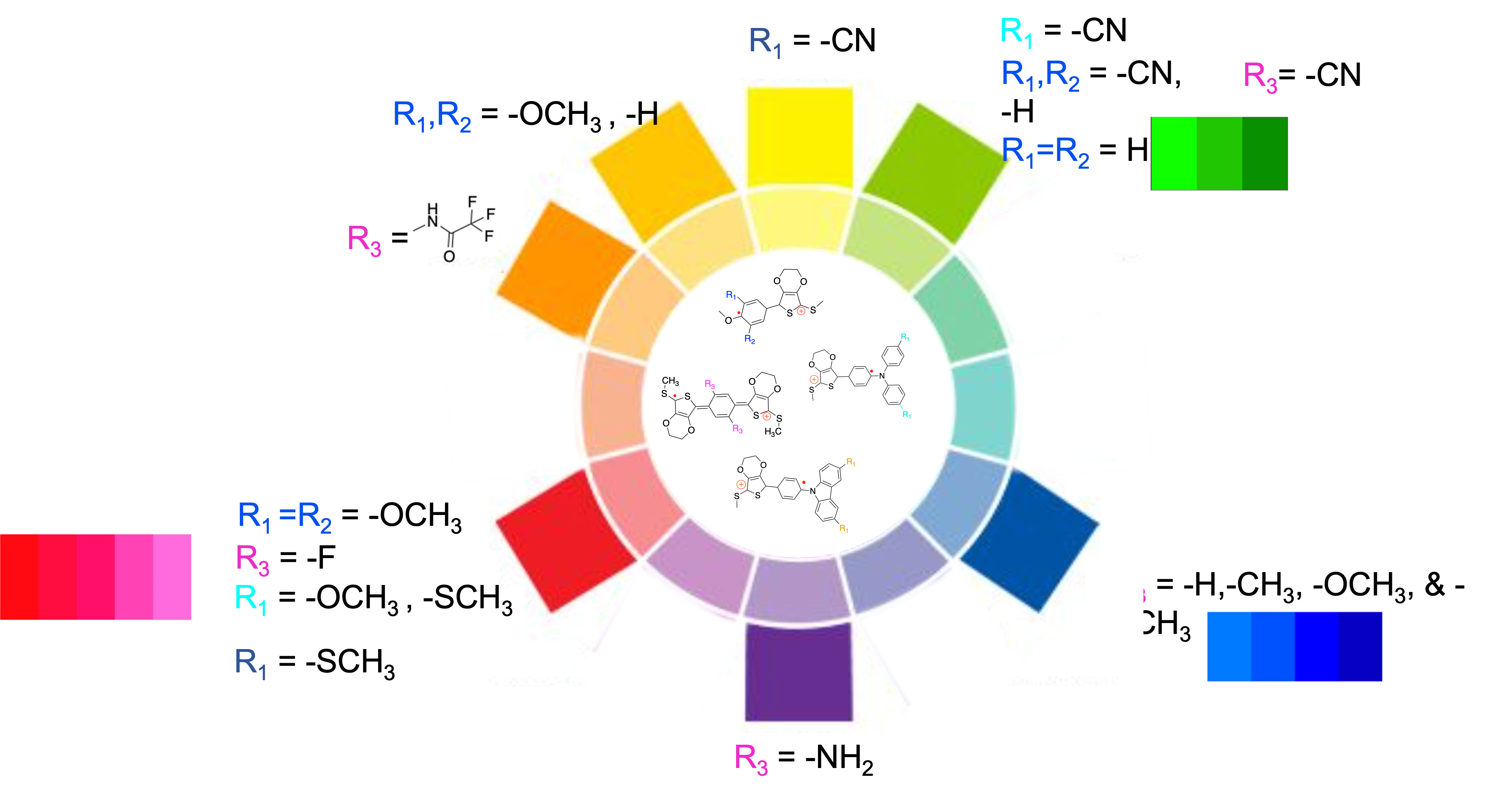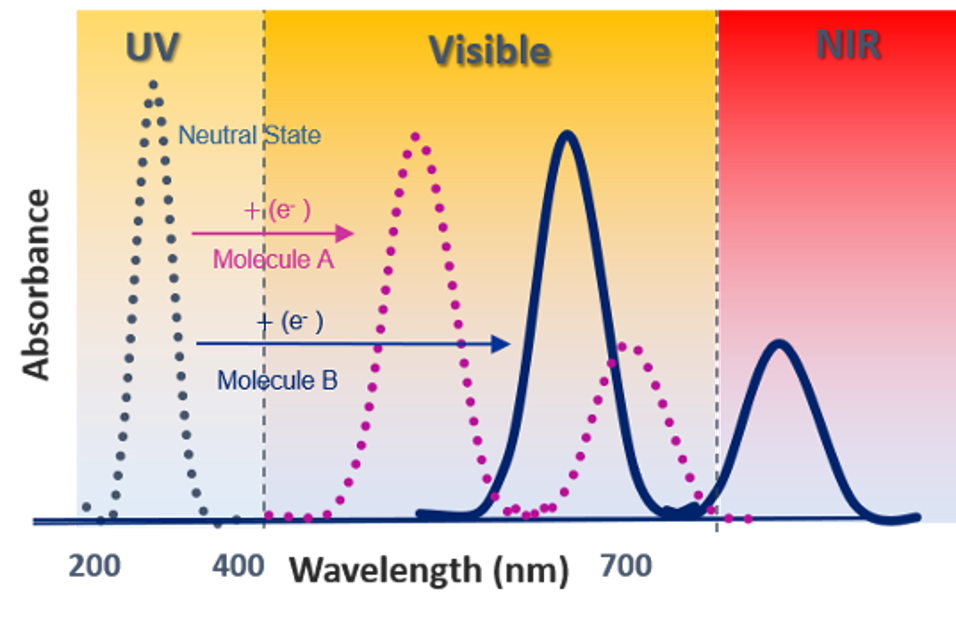While cathodically coloring polymers provide precise control of color and electrochemical properties, the challenge is in improving the contrast and color saturation. Near infrared light absorption in the visibly transmissive forms of the cathodically coloring polymers causes residual absorption of low energy red light leading to a transmissive grey-blue hue even in the highest contrast materials.
True black-to-clear transitions with high contrast and color tuning are possible with anodically coloring ECs
These anodically coloring EC molecules provide high contrast with no absorption in the visible neutral state. They are color tunable, which is achieved by manipulating the wavelength and intensity of the radical cation transitions. The neutral states of these molecules are UV absorbing, providing solutions that are colorless and can be oxidized to vibrantly colored radical cations with absorptions that span the visible spectrum, creating green, yellow, red, orange, blue, and magenta chromophores. When mixed, these molecules create transmissive, colorless blends that switch to opaque black solutions.
- High contrast: Multi-electrochromic behavior offers high optical contrast both in visible and near infrared ranges.
- Tunable color: Broad absorption supports color mixing and color tunability in the charged state. Manipulating the oscillator amplitude of radical cation transitions enables color tuning by shifting the λmax of the low-energy absorption by over 400 nm.
- True black-to-clear transition: Molecule neutral states are UV absorbing, providing colorless solutions that can be mixed to create transmissive, colorless blends that can switch to opaque black solutions.
- Decreased energy consumption: Much lower oxidative potentials, as compared to their corresponding polyamides, effectively decreases the energy required for practical EC applications.
These materials are useful in a wide range of applications where either vibrant color-to-clear or true black-to-clear switching is beneficial:
- Transmittance:
- Goggles and glasses for military and/or recreational use
- Dimmable visors
- Residential windows for privacy, energy-saving, etc.
- Aircraft and automobile windows
- Spaceship and structure windows for thermal control
- Reflective:
- Full-color passive and active displays and signs
- E-ink and e-paper
- Switchable and self-dimming mirrors

Figure 1. Overall color palette display for unique ACE chromophores

Figure 2. Anodically Coloring ECs (ACEs): Clear (neutral state) -> Colored (oxidized state)
